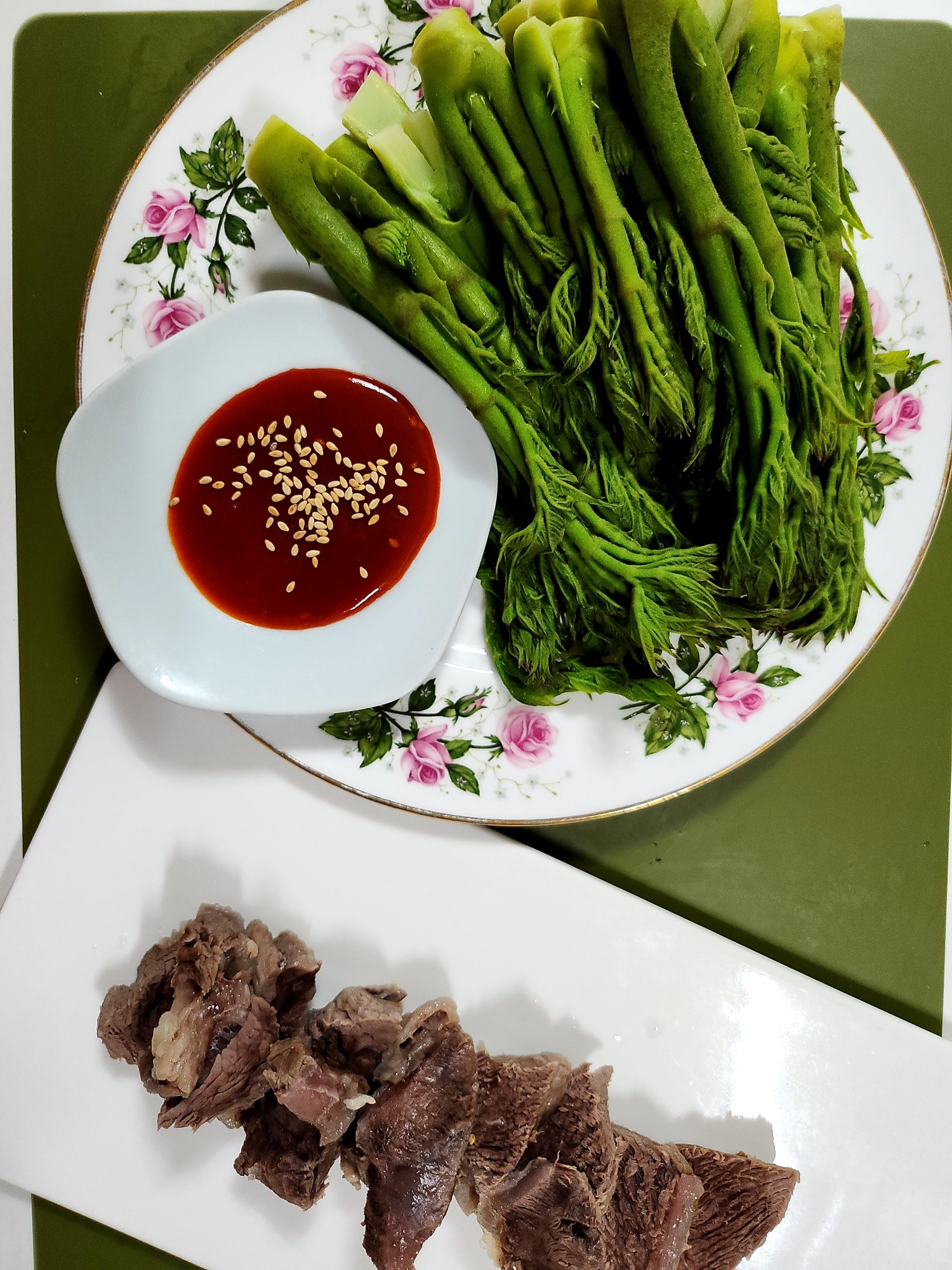Spring’s Delicate Aroma: Blanched Aralia Elata (Dureup) Recipe
How to Make Blanched Dureup: A Simple Recipe for the Slightly Bitter Spring Vegetable

The season for Aralia elata, or ‘Dureup’, has finally arrived! Though it’s still early, I’m starting to see it appear in markets and shops, and its wonderful taste and aroma make it a beloved spring vegetable. Today, we’ll be making Dureup ‘sukhoe’ (blanched Dureup), a simple preparation that truly highlights the vegetable’s natural flavors. The slightly bitter yet fragrant taste of blanched Dureup paired with a sweet and tangy ‘gochujang’ sauce is a match made in heaven. Let’s bring the essence of spring to your table with this delightful Dureup dish!
Main Ingredients- 200g fresh Aralia elata (Dureup)
- 1L water
- 1 Tbsp coarse salt (for blanching)
Gochujang Dipping Sauce- 1 Tbsp gochujang (Korean chili paste)
- 1 Tbsp vinegar
- 0.5 Tbsp sugar (adjust to taste)
- 1 Tbsp gochujang (Korean chili paste)
- 1 Tbsp vinegar
- 0.5 Tbsp sugar (adjust to taste)
Cooking Instructions
Step 1
Prepare 200g of fresh Aralia elata (Dureup). Dureup is a prized spring vegetable, so choosing fresh ones is key to the best flavor.

Step 2
Trim the tough, fibrous ends from the base of the Dureup stalks with a knife. This step helps to reduce any bitterness and makes the vegetable more tender.

Step 3
If the Dureup stalks are particularly large, cut them in half lengthwise. This ensures even cooking and makes them easier to handle and dip into the sauce.

Step 4
Bring 1 liter of water to a rolling boil in a pot. Add 1 tablespoon of coarse salt. Once the water is boiling vigorously, carefully add the prepared Dureup, starting with the thicker stem ends. Adding salt not only enhances the Dureup’s vibrant green color but also helps to preserve its nutrients.

Step 5
Gently press the Dureup stems down so they are submerged in the boiling water for a moment. Then, submerge the leafy tops as well. Be careful not to over-blanch, as this can make the Dureup mushy and diminish its delicate flavor and nutrients.

Step 6
The key is to blanch very briefly: about 20 seconds for the stems, then submerge the leaves and blanch for another 10-20 seconds, for a total of approximately 30-40 seconds. This short blanching time preserves the crisp texture and fresh, herbaceous aroma of the Dureup.

Step 7
Immediately remove the blanched Dureup from the hot water and plunge it into a bowl of cold water. This rapid cooling process, known as ‘chomaekjil’, helps to lock in the bright green color and stops the cooking, ensuring a crisp bite.

Step 8
Gently cup the Dureup in your hands and lightly squeeze out the excess water. Avoid pressing too hard, as this can crush the delicate stalks and leaves. A gentle squeeze is all that’s needed.

Step 9
Now, it’s time to enjoy your perfectly blanched Dureup! Serve it with the simple sweet and tangy dipping sauce made from 1 Tbsp gochujang, 1 Tbsp vinegar, and 0.5 Tbsp sugar. Dip each piece and savor the unique, slightly bitter, and wonderfully aromatic taste of spring. Enjoy this authentic taste of the season!




